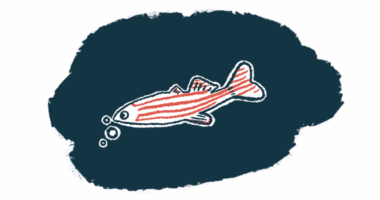KIF5A mutations, age may drive neurodegeneration in ALS: Study
Poor injury recovery shown in motor units of younger mouse models

Mutations in the KIF5A gene, associated with some cases of amyotrophic lateral sclerosis (ALS), may lead to impairments in motor unit recovery that are exacerbated with age, according to a recent study.
Motor units — nerve cells involved in movement and the muscle fibers they interact with — showed poor recovery after injury in younger mice with KIF5A mutations. With age, motor unit maintenance and repair saw even further declines.
Altogether, the scientists believe that motor unit loss with age — a natural process — may be accelerated by KIF5A mutations in ALS patients.
“Our findings could lead to a better understanding of how ALS develops in people who have this mutation,” Stephen Kolb, MD, PhD, professor of neurology and biological chemistry and pharmacology at The Ohio State University and the study’s principal investigator, said in a university press release.
The study, “Impaired motor unit recovery and maintenance in a knock-in mouse model of ALS-associated Kif5a variant,” was published in Neurobiology of Disease.
KIF5A is a gene encoding the production of KIF5A, a protein that facilitates the transport of critical cellular cargo along nerve cell projections, or axons.
Large-scale genetic studies have identified that mutations in KIF5A are associated with ALS, a neurodegenerative disease marked by the progressive loss of motor nerve cells. These mutations tend to impact the region of the protein that binds to its cargo, impairing axonal transport, and also make the protein more prone to forming clumps.
Mouse model with KIF5A variant tested
Now, the U.S. researchers aimed to learn more about the mechanisms by which these mutations might contribute to development of the neurodegenerative disease. They genetically engineered a new mouse model, which housed a previously identified ALS-associated mutation, or variant, in KIF5A.
The scientists found that one-year-old mice, an age corresponding to adulthood, with either one or two copies of the variant showed normal survival rates, weight, and motor function relative to control mice without the variant.
However, the engineered animals exhibited signs of impaired motor unit recovery following a nerve injury.
Normally, motor units in mice at that age will be lost in response to a nerve injury, but will recover. Consistently, healthy mice had completely restored motor units four months after injury — a significant difference from mice with the KIF5A mutation, which still had diminished motor units at that time.
After injury, mutant mice exhibited reduced nerve cell size and reorganization of the neuromuscular junction, the site at which nerve and muscle cells meet to communicate.
Such an incomplete recovery, “suggests a KIF5A-dependent process may be required for full recovery,” the researchers wrote.
The researchers also found that, as KIF5A mutant mice aged, they began to have reductions in motor units independent of injury, indicating decreased maintenance and resilience. Older animals also have even more incomplete recovery after injury than they did at a younger age.
KIF5A mutations, aging process indicated as drivers of neurodegeneration
Altogether, the findings indicate that an interaction between KIF5A mutations and the aging process may be responsible for driving neurodegeneration in ALS patients.
“Humans who have ALS-associated KIF5A variants appear healthy for decades before the onset of symptoms,” Kolb noted. “Our findings suggest that the onset of disease in these individuals might result from the accumulation of stressors such as nerve damage and changes due to aging, resulting in a failure by axons to repair the damage and maintain motor units.”
While the scientists believe their new mouse model is representative of the human ALS mutation — and could thus be an important research tool — they noted the mice don’t exhibit the same overt nerve cell degeneration that patients do.
According to Kolb, that issue isn’t unique to this mouse model, and is “a perennial challenge in ALS research.”
Still, “future work in these mice is warranted,” the researchers wrote, noting that such studies should test potential therapeutic approaches for targeting KIF5A in ALS.







